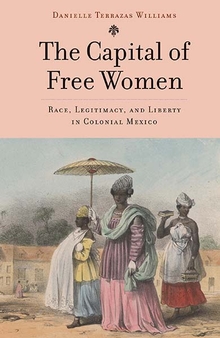Racial Ideologies, Racial-Group Boundaries, and Racial Identity in Veracruz, Mexico
Ethnic and Racial Studies
Volume 5, Number 3 (November 2010)
pages 273-299
DOI: 10.1080/17442222.2010.513829
Recent scholarly interest in the populations of African descent in Latin America has contributed to a growing body of literature. Although a number of studies have explored the issue of blackness in Afro-Latin American countries, much less attention has been paid to how blackness functions in mestizo American countries. Furthermore, in mestizo America, the theoretical emphasis has oftentimes been placed on the mestizo/Indian divide, leaving no conceptual room to explore the issue of blackness. This article begins to fill this gap in the literature by focusing on blackness in the western Caribbean cities of Port of Veracruz and Boca del Río, which lie in the Mexican state of Veracruz. Specifically, it looks at the racial-based and color-based identification of individuals of African descent, societal construction of the ‘black’ category, and the relationship between national and racial identities. This article relies on data from participant observation conducted over the course of one year and 112 semi-structured interviews.
…Blackness in Mexico
During the 16th and 17th centuries, Mexico and Peru were the largest importers of African slaves in Spanish America (Palmer, 1976). Most scholars estimate that approximately 200,000 African slaves reached Mexico’s shores, although the number may be higher since many slaves were imported illegally (Aguirre Beltrán, 1944). When the slave system collapsed in the early 1700s, the biological integration of the population increased as the African-origin population increasingly mixed with the Indian and Spanish groups (Cope, 1994). After 1821, when Mexico gained independence from Spain, legal distinctions pertaining to race were terminated (González Navarro, 1970). By this time it was generally assumed that the black population had ‘disappeared’ through biological integration with the broader population.
Mexico’s early-20th-century post-revolutionary ideology further solidified the narrative of the disappearance of Mexico’s black population. This ideology promoted the mixed-race individual (mestizo) as the quintessential Mexican (Knight, 1990; Vasconcelos, 1925). In doing so, however, it not only glorified the mestizo, but sought to assimilate the Indigenous (Knight, 1990) and African (Hernández Cuevas, 2004, 2005) components of Mexico’s population through integration. The erasure of the African element in Mexico continued in the following decades through the Eurocentric re-interpretation of particular aspects of Mexican culture (Gonzalez-El Hilali, 1997; Hernandez-Cuevas, 2004, 2005).
The supposed disappearance of the African-origin population was first questioned in the 1940s when Gonzalo Aguirre Beltrán (1946, 1958) studied what he defined as a ‘black’ population in the Costa Chica region of Mexico’s southern coast. Aguirre Beltrán’s pioneering study set the stage for the re-emergence of the issue of blackness in Mexico. In the past few decades, there has been a surge of scholarly work on the topic, much of which has focused on the historical experience of Africans and their descendants (Aguirre Beltrán, 1944; Alcántara López, 2002; Bennett, 2003; Carroll, 2001; Chávez Carbajal, 1997; García Bustamante, 1987; Gil Maronã, 1992; Herrera Casasús, 1991; Martínez Montiel & Reyes, 1993; Martínez Montiel, 1993; Motta Sánchez, 2001; Naveda Chávez-Hita, 1987, 2001; Palmer, 1976; Rout, 1976; Vincent, 1994; Vinson III, 2001; Winfield Capitaine, 1988) and the African contribution to Mexican culture (Díaz Pérez et al., 1993; Gonzalez-El Hilali, 1997; Hall, 2008; Hernandez-Cuevas, 2004, 2005; Malcomson, forthcoming; Martínez Montiel, 1993; Ochoa Serrano, 1997; Pérez Montfort, 2007; for more general overviews and/or discussions of Afro-Mexicans, see Hoffman, 2006a, 2008; Martinez Montiel, 1997; Muhammad, 1995; Vinson III & Vaughn 2004); less attention has been paid to the contemporary experience of Mexicans of African descent. When the contemporary experience is addressed, most scholars focus on the Costa Chica region (Aguirre Beltrán, 1946, 1958; Althoff, 1994; Campos, 2005; Díaz Pérez et al., 1993; Flanet, 1977; Gutiérrez Ávila, 1988; Hoffman, 2007a; Lewis, 2000, 2001, 2004; Moedano Navarro, 1988; Tibón, 1961; Vaughn, 2001a). However, Hoffman (2007a, 2007b) argues that the Costa Chica represents an exceptional case in Mexico, and that identity formation in this region is not based on negotiation with state-sponsored institutions due to their limited presence in the area…
Read or purchase the article here.

